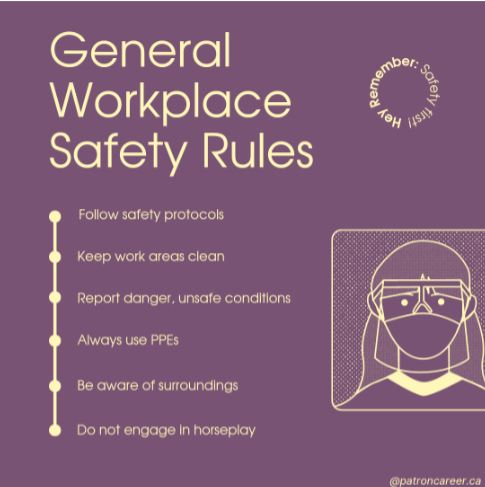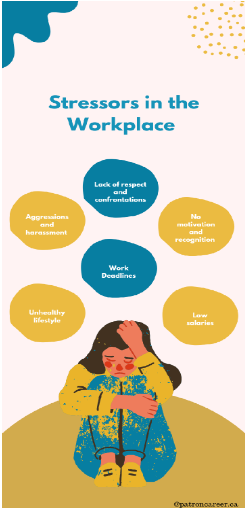
Why Employees Leaving Job
7 March, 2023
Patron Career Staffing firmly believes in adopting a tailored approach to meet temporary and permanent recruitment needs. We safeguard the interest of our clients by finding such workers who are knowledgeable and reliable.
About UsNeed help? Make a Call
32 Dundas Street East Unit A, L5A1W2

Workplace hazards are recurrent in most work environments. They are numerous and can be ensued from various factors such as the type of work being done, substances, the equipment used, the workplace environment, and even can be the outcome of behaviour and conduct of the people working in such environment. Workplace hazards can cause harm, injury or illness to workers and result in loss of life or limb, property and even legal consequences for employers. It is therefore crucial to identify and address workplace hazards to ensure the safety and well-being of employees. Because the workplace is supposed to be a reliable and congenial place, where those working can work freely without any menace knocking at the doors.
Through the medium of this article, PCS determines to caution business owners, plant managers and the common workmen about the usual workplace hazards and how they can be mitigated well in advance because as they say- Precaution Is Always Better Than Cure.
The Canadian Centre for Occupational Health and Safety (CCOHS) has defined workplace hazards as “any source of potential damage, harm or adverse health effects on something or someone.” So basically hazards cover both property and person and have detrimental effects on their health and environment.

1. Physical Hazards
Physical hazards are one of the most widespread hazards in the workplace. These hazards can include slips, trips, falls, loud noise, being struck by objects, getting caught in machinery, harmful gases, exposure to extreme temperatures, harm from violent radiations and pressure. Such hazards, though least obvious, are most prevalent in industries such as construction, road transportation, manufacturing, and excavation.
2. Chemical Hazards
Such workplace hazards thrive in places where workers are exposed to dangerous chemicals in solid, liquid or gaseous forms. They can include exposure to poisonous substances such as cleaning agents, raw materials, flammable gases, solvents, etc. as well as chemical burns from corrosive materials. Agricultural industries, laboratories and manufacturing units are mainly susceptible to chemical hazards.
3. Biological Hazards
Biological hazards occur most typically when workers are exposed to infectious agents such as bacteria, viruses, and fungi. Workers in healthcare facilities, laboratories, law enforcement agencies, waste management, and animal shelters are particularly susceptible to biological hazards. It entails exposure to bodily fluids like blood, fungi, animal diseases, bacteria, dust, vermin, sewage, etc.
4. Ergonomic Hazards
These hazards can risk people's lives by causing them musculoskeletal injuries. These result from strenuous tasks, body postures, working conditions, and manual lifting, that strain their muscles and joints, leading to injuries such as repetitive strain injury (RSI), back pain, sore muscles, fatigue and carpal tunnel syndrome. Industries such as construction, healthcare, agriculture, manufacturing, and office setups are susceptible to ergonomic hazards.
5. Psychological Hazards
Psychological hazards prevail when workers are subjected to stressful or traumatic situations such as violent dispositions from others, excessive burnout, bullying, aggression and sexual harassment. These are common in any type of job but Workers in healthcare facilities, schools, and customer service jobs are highly prone to psychological hazards.

Workplace hazards can pose significant risks to workers and result in significant harm, including loss of life or limb and overall physical and mental health of those involved. Therefore, prevention and control of such life- threatening hazards should be a pressing obligation for all employers and organizations. They have an ardent responsibility towards their employees, and to identify and address workplace hazards to ensure the safety and upbeat of their employees.
By enforcing appropriate measures such as providing personal protective equipment, conducting appropriate risk assessments, and promoting good ergonomic practices, employers and workmen can work together to eliminate workplace hazards and foster a safe work zone for the workmen.
